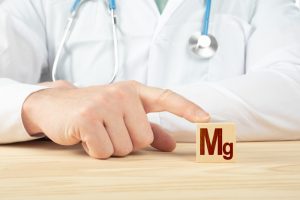Testicular torsion is a critical medical condition that demands immediate attention. This urological emergency occurs when the spermatic cord, which supplies blood to the testicle, becomes twisted, cutting off blood flow and causing acute symptoms.
Its sudden and severe nature, coupled with the high risk of permanent damage or loss of the testicle, makes understanding and quick response to testicular torsion vital. This article delves further into this condition. The article is guest written by Dr Edwin Ong, Medical Director of RMDY Clinic.
What are the immediate symptoms of testicular torsion, and why is it considered a medical emergency?
Testicular torsion is a urological emergency that occurs when the spermatic cord, which supplies blood to the testicle, becomes twisted and cuts off the blood flow to the testicle. The immediate symptoms of testicular torsion include:
- Sudden onset of severe pain in the affected testicle
- Swelling and enlargement of the affected testicle
- Redness or discolouration of the scrotum due to the lack of blood flow to the testicle
- Nausea and vomiting
- Lower abdominal pain
Testicular torsion is a time-sensitive condition. The twisted spermatic cord can cut off the blood supply to the testicle, leading to tissue damage and testicular death if left untreated. The risk of permanent damage increases with time and irreversible tissue damage can occur after a few hours without blood flow. This is why testicular torsion is considered a medical emergency.
How quickly should someone seek medical attention if they suspect testicular torsion?
If someone suspects they may have testicular torsion, it is crucial to seek immediate medical attention. Testicular torsion is a medical emergency, and time is of the essence. The longer blood flow is compromised to the testicle, the greater the risk of permanent damage or loss of the testicle.
What is the typical procedure for treatment, and what are the potential risks if left untreated?
The typical procedure for correcting testicular torsion is surgical intervention to detorse (untwist) the spermatic cord and restore blood flow to the affected testicle. The urologist will make an incision in the scrotum to access the affected testicle, then carefully untwist the spermatic cord, restoring blood flow to the testicle. If the torsion has caused significant tissue damage, a partial or complete removal of the testicle (orchiectomy) may be necessary.
The potential risks of testicular torsion, if left untreated, are significant and may include the following:
- Testicular damage: Without prompt medical intervention, testicular torsion can cause irreversible damage to the testicle due to the loss of blood flow. In severe cases, the testicle may become nonviable and require removal.
- Loss of fertility: In cases where the torsion results in the loss of one or both testicles, it can lead to a decrease in sperm production and, potentially, infertility.
- Chronic pain: Even if the testicle is saved, some individuals may experience chronic testicular pain following torsion.
- Recurrence: Without preventive measures (such as orchidopexy), testicular torsion may recur.
Are there any predisposing factors or activities that can increase the risk?
Testicular torsion is a spontaneous condition, meaning it can occur without any specific predisposing factors or activities. However, certain anatomical and physiological factors can increase the risk of experiencing testicular torsion, and these include:
- Congenital deformity: One of the most common anatomical risk factors is a congenital condition known as bell clapper deformity, whereby the testicles are not securely attached to the scrotum and can move more freely within the scrotal sac. This increased mobility makes it easier for the spermatic cord to twist and cut off blood flow to the testicle.
- Age: Testicular torsion is most common in adolescents and young adults, particularly those between the ages of 12 and 18. The reason for this age predilection is not entirely clear, but it may be related to changes in the anatomy and size of the testicles during puberty.
- Physical Activity: While testicular torsion can occur at any time, it may be more likely to happen during or following physical activities, including sports or vigorous exercise.
- Trauma or Injury: Trauma to the testicles, such as a direct blow or injury, can theoretically increase the risk of testicular torsion.
How can one differentiate between testicular torsion and other conditions like epididymitis or testicular injury?
Differentiating between testicular torsion and other conditions, such as epididymitis or testicular injury, can be challenging because the symptoms of these conditions may overlap. However, there are some key differences in the clinical presentation. Subsequently, diagnostic tests can help healthcare providers determine the underlying cause:
Testicular Torsion:
- Sudden onset of intense, constant testicular pain.
- Swelling and enlargement of the affected testicle may be present.
- The scrotum may appear red or discoloured.
- Nausea and vomiting can occur due to the intense pain.
- There may be a high-riding testicle (the affected testicle is pulled up toward the inguinal canal).
- On examination, the testicle may feel firm or tender.
- Ultrasound may show decreased or absent blood flow to the affected testicle
Epididymitis:
- Gradual onset of pain, which may become severe over time.
- Pain often begins in the lower abdomen or pelvis and then radiates to the scrotum.
- The scrotum may be red, warm, and swollen but not as severe as in testicular torsion.
- Fever, chills, and urinary symptoms, such as painful urination, may be present.
- On examination, the epididymis may be swollen, tender, and painful.
Testicular Injury:
- Pain typically follows a history of trauma or injury to the testicle.
- The pain may be severe but is often localised to the site of the injury.
- The scrotum may show signs of bruising.













